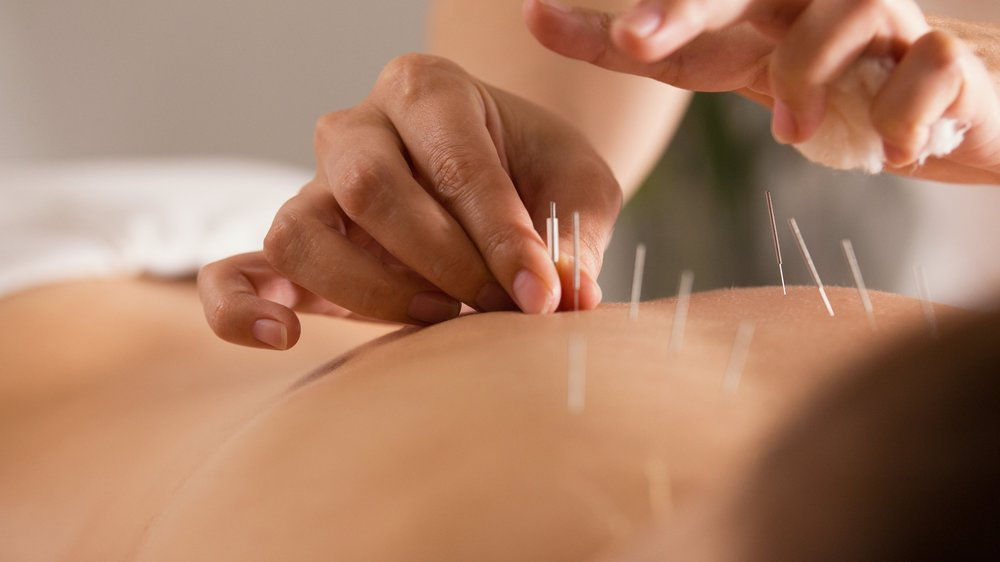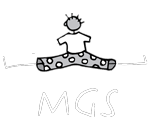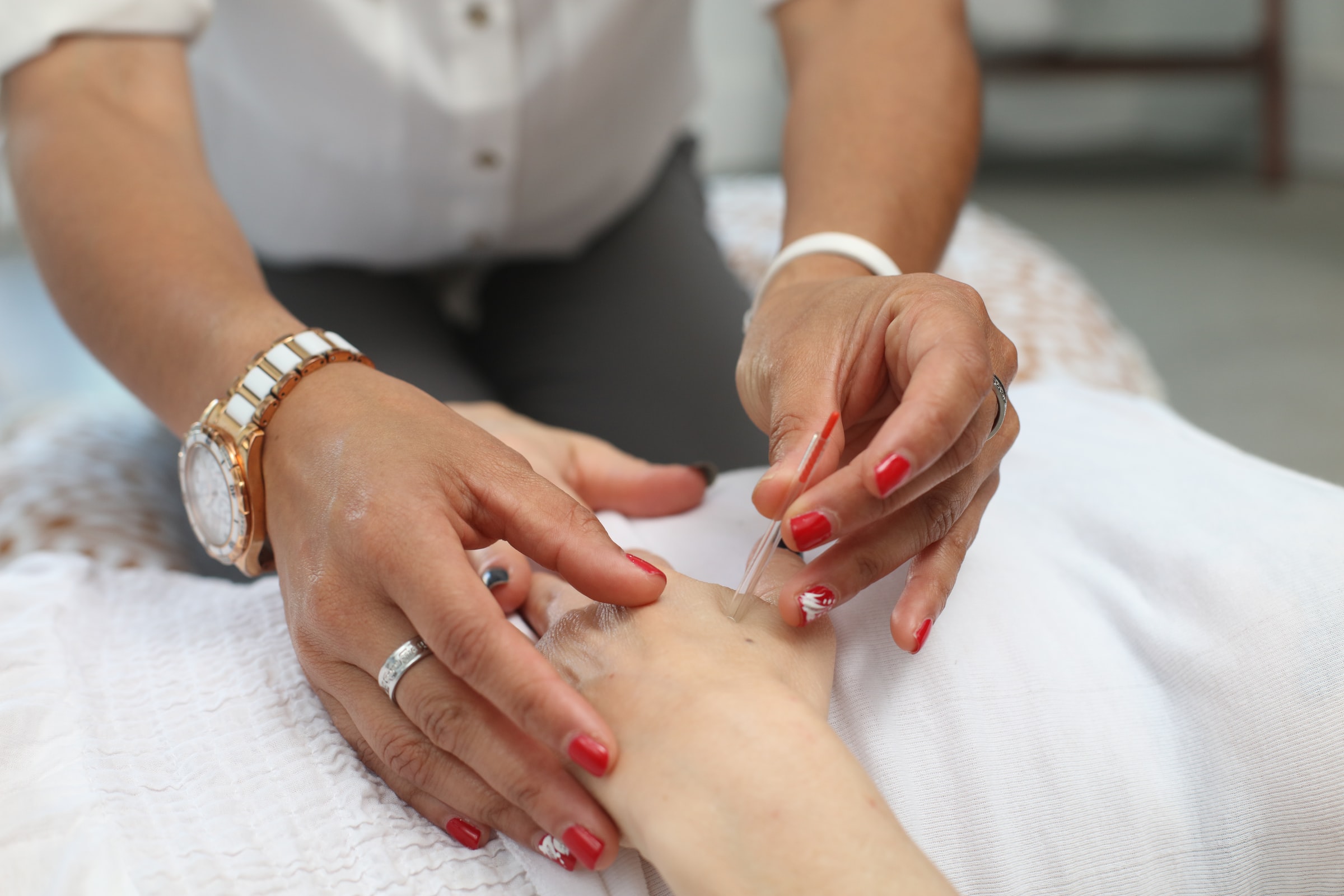
Is dry needling the same as acupuncture?
While acupuncture is a familiar term to many of us, you may not have heard about dry needling and its benefits, or you may be thinking of embarking on a course of dry needling or acupuncture. In this article, we take a look at the two practices of dry needling vs acupuncture and explore the differences between them.
What is dry needling?
Dry needling is the practice of inserting small needles into the body to relieve muscular pain. Also known also as myofascial triggerpoint needling, the method uses a filiform needle inserted through triggers (like an acupuncture needle). Triggerpoints or myofascial are sites that produce irritations within muscle tissue and are often characterized by muscle knots or tightness or discomfort.
Firstly to understand what is Dry needling? how does it work? We should understand a little bit about the muscles and what is causing the muscle pain. Myofascial trigger points are defined as a spot that is an overused or sustained repetitive activity. when treated they may regress slightly to a state when they stop producing pain.
The term “dry” is used as the needles don’t inject liquid into the body. They are placed at strategic trigger points in muscle or tissue, like knots or tender areas, and are left there for a short while. This action stimulates the area and releases pain, tension, muscle pain or muscular spasm.
In dry needling, we use Sterile disposable needles and they go for deep tissue level or superficial when carried out with trigger point dry needling.
What does the research say?
Scientific research tells us that as the body reacts to the needles being inserted, its own healing function is stimulated. Muscles are soothed and function is restored.
The treatment of dry needling is used to reduce inflammation, relax tight muscles and muscle pain, and speed up recovery from musculoskeletal injury. It can help relieve muscle pain with conditions such as stiff neck or shoulder pain as a result of poor posture and other chronic pain conditions.
Sports injuries
It’s also a popular treatment for sports injuries, ligament strain, and to stimulate tissue repair in chronic conditions such as tennis elbow.
Dry needling also helps in the conditions like tension-type headache, sciatica, joint pain, repetitive strain injuries, knee pain, neck pain and muscle stress.
Many research recommends dry needling compared to sham or placebo to patients with upper quarter myofascial pain.
Correcting posture and mobility
Dry needling can help to correct bad posture by enhancing your mobility and musculoskeletal function, and so safeguards against further issues.
It’s a great treatment to have in conjunction with physiotherapy or pain relief management, complementing their benefits.
This fast-acting and versatile practice can also aid other conditions like tiredness, headaches, menstrual pain, and stress.
What is acupuncture?
Acupuncture is a branch of Chinese traditional medicine in which fine needles are inserted into the skin at specific locations to tap into the body’s energy flow. The flow is then restored to a balanced state to enable the body to heal itself.
Acupuncture practitioners believe that the trigger points where the needles are placed are where tissue, nerves, and muscles can be naturally manipulated. In the process, endorphins are released and blood flow is stimulated, helping the body to produce its own natural painkillers and start its own healing process.
In order to rebalance the flow of qi, the practitioner also uses other methods including acupressure, electro-stimulation, cupping and massage to stimulate the acupuncture points.
Acupuncture point locations conform to the standard of clinical practice guidelines of the World Health Organisation (WHO) and it carries a low risk of side effects.
The most popular injury in sports, Hamstring tightness can be effectively treated by Acupuncture and gives excellent results in a very short time.
It effectively assists in relieving muscle pain, neck and knee pain, osteoarthritis and headache. This is why acupuncture is used as a treatment for pain relief and musculoskeletal conditions, as well as other health concerns like anxiety and fertility.
The difference between dry needling and acupuncture
At first glance, when we assess the dry needling vs. acupuncture debate, we can see a very similar picture. You would be forgiven for wondering what is the difference between dry needling and acupuncture since both use needles inserted into the body to relieve pain.
Dry needling targets specific areas within the muscles that are causing problems, while acupuncture focuses on 350 “acupuncture points” distributed throughout the human body.
The History
Acupuncture is based on a theory of Chinese Traditional Medicine, while dry needling as we know it today is a more modern innovation that has been developed only in the last couple of decades.
The Study
Acupuncturists may take a short course or may study for a degree in Chinese medicine to get a more in-depth knowledge of this ancient practice. On the other hand, while no specific training is required to practise dry needling, it is often performed by experienced practitioners with detailed knowledge of anatomy such as physiotherapists.
The Similarity
It’s also interesting to note the link between an ancient Chinese needling technique known as Ah-Shi point needling, which would target local sore points in muscles, and the modern-day practice of dry needling. You can see the similarities and the fact that dry needling in some form has been around for many years, even though it has only recently been validated by evidence-based studies.
Which one is right for me?
When it comes down to it, what dry needling and acupuncture have in common is their ability to work in harmony with the body, and so both are considered to be natural, low-risk holistic treatments with many benefits.
From the point of view of research, Acupuncture has more depth research and clinical practice guidelines compared to dry needling, as it is rather new.
Learn more
If you’re intrigued by the practice of dry needling, why not learn more about what our expert physiotherapists can offer you with this modern and effective treatment? You can also book your appointment online with no referral needed in a few easy clicks.
Get free health and wellbeing tips
Subscribe below for regular updates and promotions about the best way to improve your quality of life and your health. Or book an appointment with our expert physical therapists today.
CALL NOW TO BOOK YOUR APPOINTMENT


